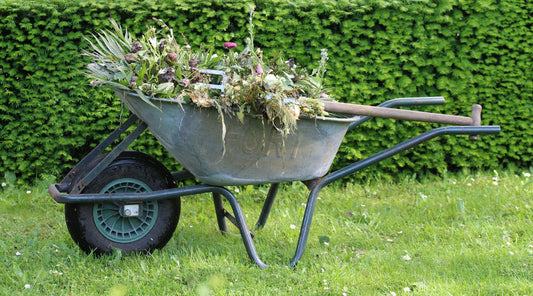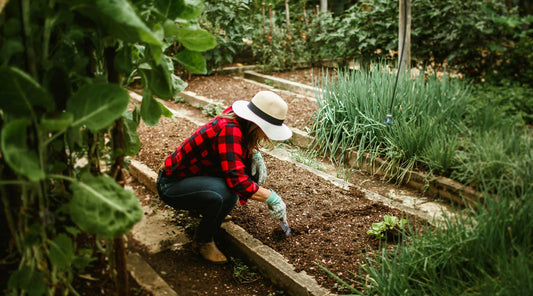Gardening is more than just a hobby for me. It's a way to connect with the earth, my family, and the food we eat. My twins, a curious and energetic duo, have turned my vegetable garden into a playground of learning and laughter. As we prepare for another spring season, I’m excited to share how we plan our garden—and hopefully inspire you to do the same!
Why Planning Your Vegetable Garden Now Sets You Up for Spring Success
Winter might seem like a time to rest, but for gardeners, it’s when the magic begins. Planning your vegetable garden early ensures you have the best seeds, tools, and strategies ready to go when spring arrives. With two kids who’ve made it their mission to pick every carrot and tomato we grow, I’ve learned the value of being prepared.
Starting now gives you time to:
- Research which crops thrive in your climate.
- Sketch out a layout that makes the most of your space.
- Order seeds before popular varieties sell out.
For us, planning starts with a family meeting—the twins each grab their markers and draw “blueprints” of how they think the garden should look. Let’s just say their designs are… ambitious, but it’s a reminder that gardening is a creative process.
Designing Your Dream Garden Layout: Maximizing Space and Sunshine

No matter how big or small your garden is, a good layout makes all the difference. For our backyard plot, we mix practicality with playfulness. Here’s how we do it:
- Assess Your Space: We measure the garden beds and observe where sunlight falls throughout the day. The twins love using a chalk line to “draw” where rows should go.
- Choose Your Style: Whether you’re working with raised beds, containers, or an in-ground plot, think about what suits your space and mobility.
- Group Plants by Needs: To simplify watering and maintenance, we group plants with similar sunlight and water needs. For instance, tomatoes and peppers love the sun and thrive together.
- Leave Room for Fun: Last year, we added a “twin patch” for experiments—radishes grew fast, much to their delight!
Planning with kids also means accounting for accidental stomps and curious hands. They’ve taught me that a garden isn’t just a food source; it’s a place for discovery.
How to Choose the Right Crops for Your Garden and Your Plate

When it comes to choosing crops, I’ve learned to balance practicality with the twins’ adventurous tastes. Here’s how we pick:
- Consider Your Climate: Look up your USDA hardiness zone or consult local gardening guides.
- Think About Your Plate: Grow what your family loves to eat. For us, that means cherry tomatoes, cucumbers, and snap peas—snackable and kid-approved.
- Mix it Up: Add a few experimental crops. Last year, we tried purple carrots, which were a hit!
We make it a family affair, flipping through seed catalogs together. The twins always lobby for the “weird” stuff, like striped beets or mini watermelons, which keeps things exciting.
Starting Hardy Seedlings Indoors: A Step-by-Step Guide
One of my favorite winter activities is starting seedlings indoors. It’s a way to bring the promise of spring into our home. Here’s how we do it:
- Gather Supplies: Seed trays, grow lights, and quality potting mix are essentials. We reuse containers whenever possible—the twins’ yogurt cups make excellent seedling pots.
- Choose the Right Seeds: Hardy vegetables like broccoli, kale, and onions do well indoors.
- Plant with Care: We poke tiny holes in the soil and drop in seeds. The twins take turns watering with a spray bottle (a less messy option than a watering can!).
- Provide Light and Warmth: Our grow lights sit on a timer, ensuring 12-16 hours of light daily. The warmth of the kitchen window sill also helps.
- Monitor Growth: As the seedlings sprout, the twins love measuring their height and cheering them on like little athletes.
This process teaches patience, responsibility, and the magic of life sprouting from a tiny seed.
Companion Planting and Crop Rotation: Secrets to a Thriving Vegetable Garden
Companion planting is like matchmaking for vegetables. Some plants grow better together, while others need distance. Here are a few combos that work for us:
- Tomatoes and Basil: Not just a kitchen duo, these two help each other thrive.
- Carrots and Onions: Onions repel pests that love carrots.
- Cucumbers and Nasturtiums: The flowers deter aphids and add a splash of color.
We also practice crop rotation to keep the soil healthy. It’s as simple as planting different families of vegetables in new spots each year. The twins help by labeling rows with colorful markers so we can track what’s where.
Preparing for Spring Planting: Essential Tools and Supplies
As spring nears, we start organizing tools and supplies. Here’s what we keep on hand:
- Garden Tools: Trowels, gloves, and a sturdy hoe.
- Soil Amendments: Compost and organic fertilizers to enrich the soil.
- Mulch: To retain moisture and suppress weeds.
The twins have their own mini tools, which makes them feel like full-fledged gardeners. They’ve even turned soil preparation into a game, racing to see who can pick out the most rocks.
From Planning to Planting: Keeping the Joy in Gardening
If there’s one thing I’ve learned, it’s that gardening isn’t just about the harvest. It’s about the journey, the lessons, and the memories made along the way. The twins remind me to celebrate small victories—the first sprout, a perfectly straight carrot, or even a mud pie creation.
Planning a vegetable garden is an invitation to dream, experiment, and grow. Whether you’re gardening solo or with a family, there’s joy in every step. As we gear up for another season, my hope is that your garden—like ours—becomes a place where hearts and hands work together to create something beautiful.
Happy planting!
For more garden planning inspiration check out these posts as well:
Companion Planting: Cultivating Garden Harmony
Planting in March: Top 8 Picks for a Vibrant Garden







